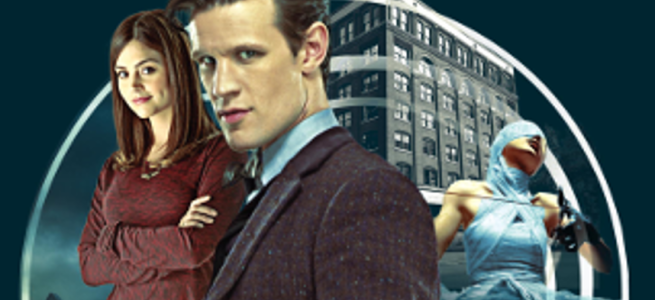Wow.
I want to post the blurb here, first of all.
23 November, 1963
It is the day after John F. Kennedy’s assassination – and the faces of the dead are everywhere. PC Reg Cranfield sees his late father in the mists along Totter’s Lane. Reporter Mae Callon sees her grandmother in a coffee stain on her desk. FBI Special Agent Warren Skeet finds his long-dead partner staring back at him from raindrops on a window pane.
Then the faces begin to talk, and scream… and push through into our world.As the alien Shroud begins to feast on the grief of a world in mourning, can the Doctor dig deep enough into his own sorrow to save mankind?
You’d think that this is a relatively serious book, wouldn’t you? One with quite a mature tone – after all, it does have a rather mature theme (death and the stages of grief), so you’d expect it to be a generally mature book, right?#
And… well, I suppose it is in places. But in other places, it’s the exact opposite. The tone is as malleable and inconsistent… clay in water? Does that analogy work? Probably not. But the point stands – the tone of this novel is ridiculous. You’ve some very serious moments on one end of the scale, such as the introductory scene for FBI Agent Warren Skeet (this scene fleshes out his backstory, and depicts the death of his former partner) but on the other side of things you have Wobblebottom.
Yeah, you read that right. Wobblebottom.
You see, around halfway through the novel the Doctor, Clara, Warren Skeet and Mae (another new character) travel to the previous world which the Shroud had attacked, and they find the remains of the civilization. In what should have been a very complex and intelligent segment of the novel, the Doctor & co find a group of crazed tribes, each defined by a separate feeling – different emotions took over after their grief was removed, and so they become Tremblers (fear) or Ragers (rage) or Wanters (averis). That’s a pretty bold and interesting concept, I think, which should have been explored much more fully, and with a great deal more intelligence – instead we’re soon introduced to Wobblebottom and Flip flop, leaders of the Circus resistance.
It’s… it’s a nice idea, that a Circus is trying to give people back their emotions through happiness… but it doesn’t work, not in this scenario. It just undercuts everything that had been built up already. Not that much had, admittedly – the tone was always going to be an issue, what with the way the Doctor has been characterised in this novel. It’s as though all the whimsy, all the jesting, all the not-at-all-serious-and-sometimes-borderline-irritating aspects of the Eleventh Doctor have been distilled and put into this (it really is a pastiche, the sort of thing you find in juvenile fan fiction. The Doctor even calls the TARDIS “sexy”. Twice. Like… what?). It’s a terribly misjudged piece of writing, one that doesn’t deserve to be likened to Matt Smith’s brilliant portrayal.
The other issue is a gratuitous overuse of continuity. And I mean that quite seriously – continuity is great, but this is too much. Way, way too much. A couple of examples –
- The policeman at Totter’s Lane. (He’s totally superfluous to the plot, sadly)
- 23 pages in, and we have a reference to Astrid. Seriously?
- The Fast Return switch is introduced in the most poorly written way (“What’s that?” “Oh, it’s the Fast Return switch”) simply so it can be used as a plot device in a few pages time. (And it barely makes sense there either)
Given that the final confrontation is, essentially, a huge continuity fest (flashbacks from painful moments in the Doctor’s lives) I would’ve expected all those little things to have been cut right down. They do get very, very distracting, and can bring you right out of it. Especially when it’s wrong, for goodness’ sake! (Admittedly, the larger moments – flashbacks and a joke sequence – do work very well, but they feel cheapened by all the other, prior references)
So… eh. This book was not a good one, to be honest. I’m not sure I’d recommend it for anything beyond completion’s sake, unless you enjoy that more whimsical tone of story. Certainly one to avoid if you’re expecting a serious novel, in the vein of prior stories (I was actually expecting this to be sort of similar to Vampire Science, but… it couldn’t be further removed from it)
2/10
Related:
